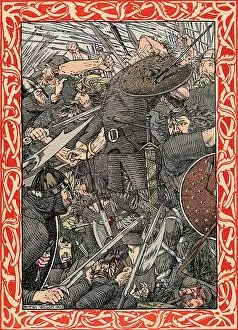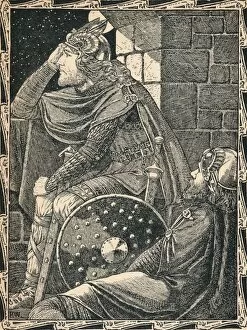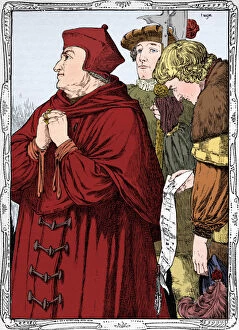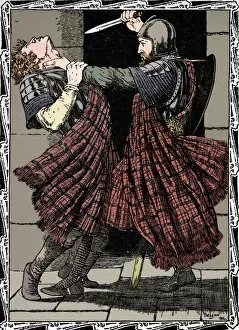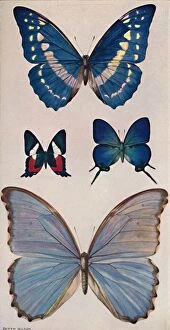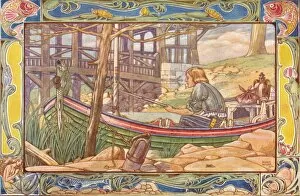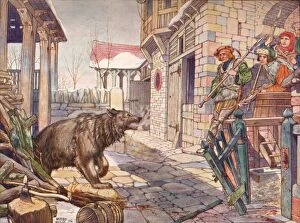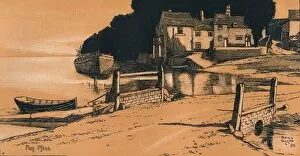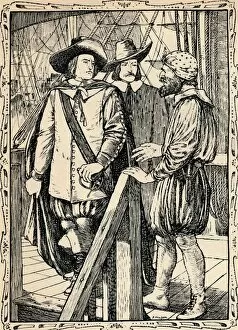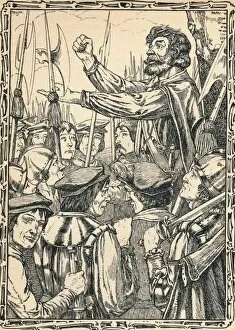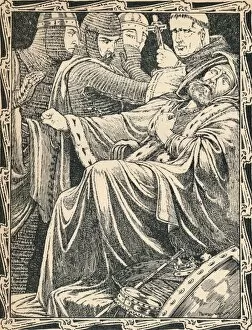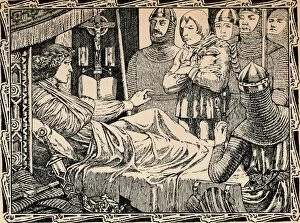Patten Wilson Collection
Patten Wilson: A Master of Historical Artistry Step into the captivating world of Patten Wilson, a renowned artist whose brushstrokes brought history to life
For sale as Licensed Images
Choose your image, Select your licence and Download the media
Patten Wilson: A Master of Historical Artistry Step into the captivating world of Patten Wilson, a renowned artist whose brushstrokes brought history to life. With works like "The Death of Harold, 1902" and "Joan of Arc, 1902, " Wilson skillfully captured pivotal moments in time with his impeccable attention to detail. In "Elizabeth at Traitors Gate, 1902, " we witness the intensity on Queen Elizabeth's face as she confronts her enemies head-on. Similarly, "The Arrest of Cardinal Wolsey, 1902" portrays the cardinal's downfall with striking realism. Wilson's talent for recreating historical events shines through in pieces such as "The First Cannon at Crecy, 1902. " The explosive power and chaos are palpable as war unfolds before our eyes. Equally gripping is his depiction of Bruce stabbing Comyn in "Comyn Stabbed By Bruce, 1902. " Transporting us back to significant battles in history is another forte for Wilson. In "Richmond at Bosworth, 1902, " he captures the tension and uncertainty surrounding Richard III's final stand. Meanwhile, "At The Battle of Agincourt, 1902" immerses us amidst the bravery and camaraderie that defined this legendary clash. Yet not limited to historical scenes alone; Wilson also ventured into other realms. His piece titled "Some of Rios Butterflies, 1914" showcases his versatility by capturing nature's delicate beauty with vibrant colors and intricate details. "The Fisherman, 1901" evokes a sense of tranquility as we observe a lone figure casting their line against a serene backdrop. And in "The Unexpected Encounter, " we find ourselves caught up in an enigmatic moment between two individuals whose destinies intertwine unexpectedly. Through each stroke on canvas or paper alike, Patten Wilson breathed life into these diverse subjects—be it historical events, natural wonders, or chance encounters.

